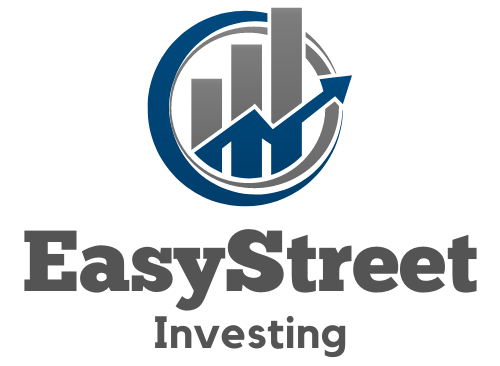In the quest for financial stability, high-yield savings accounts stand out as a beacon of hope. They offer the chance to earn more on your hard-earned cash without the roller coaster ride of the stock market. But what’s the catch? We’ll dive into the nitty-gritty of these lucrative accounts, laying bare both their perks and potential pitfalls. You’ll come away with a clearer picture, whether you’re a seasoned saver or just dipping your toes in the waters of personal finance.
Imagine earning significantly more interest than your typical savings account delivers; that’s the allure of high-yield options. As we unpack this topic, we’ll explore how these accounts can be a game-changer for your savings goals and examine any strings attached. From safeguarding your nest egg to understanding liquidity constraints, get ready to navigate through the world of high-yield savings with confidence and clarity. Stick around—you might just find the key to boosting your financial future without getting tangled in complexities.
Important Highlights
1. High-yield savings accounts offer significantly higher interest rates compared to traditional savings accounts, enabling account holders to grow their savings at a faster pace. These accounts are particularly advantageous during periods of higher inflation, where the value of money can diminish quickly if not invested in an interest-bearing account.
2. While the benefits of higher returns are appealing, it’s crucial to be aware that these types of savings accounts may come with certain limitations, such as minimum balance requirements or limited transactions. Exceeding these limits could result in fees or reduced interest rates, thus it is important for savers to understand the terms and conditions set by the financial institution.
3. The safety of funds deposited in high-yield savings accounts is generally assured up to a certain amount by organizations like the Federal Deposit Insurance Corporation (FDIC) in the United States or similar entities elsewhere. This means that even in the event of a bank failure, deposits up to $250,000 per depositor, per insured bank, for each account ownership category are typically protected.
4. Customers looking to open a high-yield savings account should perform due diligence by comparing various banks and credit unions. Factors such as customer service ratings, ease of access through online banking platforms, and any potential monthly fees should be considered alongside the offered interest rate to ensure that they choose an account that aligns with their financial needs and habits.
5. It’s advisable for potential savers to stay informed about prevailing economic conditions since interest rates on high-yield savings accounts can fluctuate with changes in national interest rates determined by central banking authorities like the Federal Reserve. Being proactive about monitoring these changes can help individuals make timely decisions regarding their savings strategies.
Understanding High-Yield Savings Accounts
High-yield savings accounts offer significantly higher interest rates compared to traditional savings options. Financial institutions provide these accounts as a stable avenue for customers to grow their savings more rapidly. The annual percentage yield (APY) is a critical figure, indicating the real rate of return on your deposits over a year.
The APY typically fluctuates based on market conditions and central bank policies affecting interest rates. Account holders benefit from compounding interest, where the interest earned itself earns additional interest. This compounding effect can substantially increase savings over time.
Eligibility and Requirements
To open a high-yield savings account, banks may stipulate certain eligibility criteria such as minimum deposit amounts and maintaining minimum balance requirements. These thresholds vary across financial institutions but are often within reach for most savers seeking to maximize their returns without taking on excessive risk.
Some accounts might also limit the number of free withdrawals or transfers per month, aligning with Federal Reserve regulations. It’s crucial to understand these terms to avoid any fees or penalties that could diminish the benefits of higher yields.
Digital Accessibility and Management
The majority of high-yield savings accounts are offered by online banks or banking platforms. These digital-first institutions often provide user-friendly interfaces and tools for seamless account management. Customers can easily track their balances, transfer funds, and monitor interest accrual through web portals or mobile apps.
Digital accessibility also extends to customer service, where many online banks excel in providing support via chatbots, email, or phone calls. However, it is important to ensure that robust security measures protect your personal financial information when engaging with online banking services.
Risks Associated with High-Yield Savings Accounts
While considered low-risk compared to investment products like stocks or mutual funds, high-yield savings accounts do carry some level of risk. Inflation is a significant factor; if the inflation rate surpasses the account’s APY, the purchasing power of your savings could erode over time.
Additionally, external economic factors can lead to fluctuating interest rates which may impact expected returns on your deposits. It’s beneficial to keep an eye on economic trends and adjust your saving strategy accordingly.
Liquidity Considerations
High-yield savings accounts typically offer greater liquidity than other high-interest vehicles like Certificates of Deposit (CDs). Account holders usually have instant access to their funds up to the allowed transaction limits, making these accounts suitable for emergency funds or short-term saving goals.
However, frequent transactions beyond the permitted number can attract fees or even result in a downgrade of the account type by the financial institution.
Federal Insurance and Safety Nets
A key aspect of high-yield savings accounts is the protection they offer through the Federal Deposit Insurance Corporation (FDIC) or National Credit Union Administration (NCUA) for credit unions. Deposits are insured up to $250,000 per depositor per institution, providing peace of mind against potential bank failures.
This insurance ensures that your money is safe up to the covered limit even if the bank faces financial difficulties. To confirm an institution’s FDIC or NCUA status, use their respective online directories.
Tax Implications
Earnings from high-yield savings accounts are subject to federal—and sometimes state—taxes as income. Interest must be reported on tax returns using form 1099-INT provided by your bank if you earn more than $10 annually in interest.
Taxes can affect net earnings from these accounts; hence it’s smart to consider this when calculating real returns on your high-yield savings investments.
Selecting a High-Yield Savings Account Provider
When choosing where to open an account, consider factors such as APY offerings, fees, customer service reputation, ease of fund transfers, and digital experience. Comparing different providers helps identify which one aligns best with your saving objectives and operational preferences.
Consulting reputable sources such as Consumer Financial Protection Bureau can guide informed decision-making by highlighting transparent practices among financial institutions.
Incorporating High-Yield Savings into Your Financial Portfolio
Diversifying your portfolio is paramount in managing financial risk effectively. Including a high-yield savings account alongside other investment types can help balance overall portfolio performance while providing a reliable growth mechanism for liquid assets.
How Can You Maximize Benefits While Mitigating Risks?
- Maintain awareness of current APY rates and adjust your saving strategy if rates change significantly.
- Familiarize yourself with any account limitations such as transaction caps and balance requirements to prevent unnecessary fees.
- Regularly evaluate inflation trends against your account’s performance ensuring your purchasing power isn’t decreasing over time.
- Leverage online tools provided by digital banks for proactive account management and stay vigilant about cybersecurity practices.
- Bolster your tax planning by accounting for taxable interests earned from these accounts within annual budget assessments.
- Prioritize FDIC or NCUA insured institutions when selecting a provider for added safety of your funds.
- Consider integrating other investment forms like stocks or bonds into your portfolio for diversity alongside high-yield savings accounts.
Frequently Asked Questions
What are high-yield savings accounts?
A high-yield savings account is a type of bank account that offers a higher interest rate compared to standard savings accounts. This means your money can grow faster while it’s deposited.
How do high-yield savings accounts work?
These accounts typically compound interest daily or monthly, paying out the interest earned at set intervals, such as monthly or annually. Your balance earns money based on the annual percentage yield (APY).
What are the benefits of high-yield savings accounts?
The primary benefit is earning more interest on your savings. Additionally, they often come with low fees and can be easily managed online, making them convenient for savers.
Are there risks associated with high-yield savings accounts?
Risks are minimal but include potential interest rate changes and inflation outpacing your earnings. It’s also important to ensure your bank is FDIC insured to protect your funds.
Can I lose money in a high-yield savings account?
Under normal circumstances, these accounts are considered safe, and you should not lose the money you deposit if your bank is FDIC insured. However, the purchasing power of your money could decrease if inflation rates exceed the interest you earn.
Is there a minimum balance required for these accounts?
Some banks might require a minimum balance to open an account or to earn the highest APY offered. It’s best to check with your chosen financial institution.
How often do rates change on high-yield savings accounts?
Interest rates can fluctuate based on economic conditions and central bank policies. Banks may adjust rates accordingly, so it’s wise to monitor them regularly.
Are high-yield savings accounts insured by the FDIC?
Yes, most are insured up to $250,000 per depositor per institution by the Federal Deposit Insurance Corporation (FDIC), which means your money is protected even if the bank fails.
How do I choose the best high-yield savings account?
Look for competitive APYs, low fees, good customer service, and easy access to funds. Also consider any additional features like mobile banking or transfer options that might be important to you.
Can I easily transfer money from a high-yield savings account?
Yes, these accounts usually allow for easy transfers to other bank accounts. However, federal regulations may limit the number of certain types of withdrawals or transfers each month.
Closing Insights
Diving into high-yield savings options can be both rewarding and straightforward. They offer an excellent opportunity for growing your funds without significant risk. Remember to keep an eye on changing interest rates and maintain awareness of how inflation impacts your earnings. Choosing the right account requires balancing optimal returns with accessibility and security – ensuring peace of mind alongside financial growth.
In conclusion, while exploring these avenues for saving, always weigh up both advantages and potential drawbacks. Stay informed about market trends and regulatory changes that could affect your investment. High-yield savings accounts provide a prudent option for those seeking better than average returns on their hard-earned money without venturing into more volatile investment territories.

